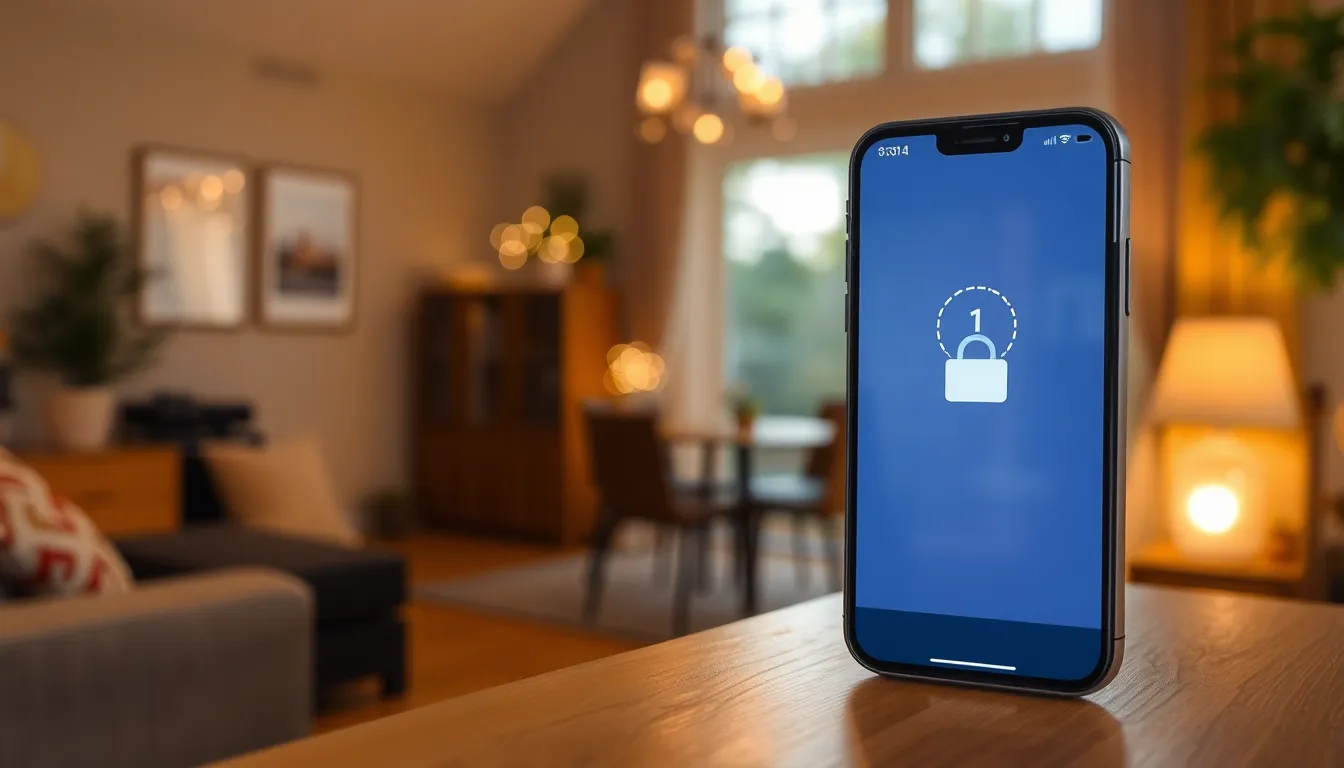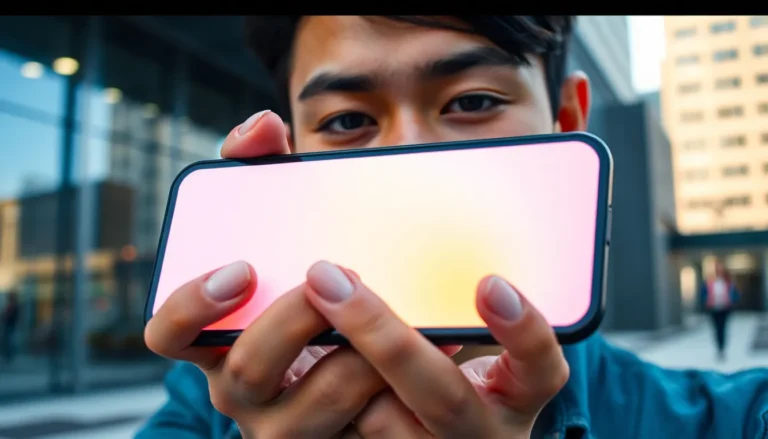Table of Contents
ToggleEver wondered what happens to your iPhone after it’s been locked for eight hours? It’s like a digital hibernation—your phone’s version of a good night’s sleep, but without the snoring. When that eight-hour mark hits, your device doesn’t just sit there twiddling its thumbs. Instead, it goes into a security mode that’s designed to keep your data safe from prying eyes.
But wait, there’s more! If you think your iPhone just takes a break, think again. It’s gearing up for a little game of hide and seek, making sure your sensitive information stays under wraps. So, what really goes down in those eight hours? Buckle up because it’s time to dive into the intriguing world of iPhone security features and find out what happens when your trusty device goes into lockdown.
Understanding the 8 Hour Lock on iPhone
The 8 hour lock feature on iPhone activates a security protocol after eight hours of inactivity. This duration allows the device to safeguard sensitive information from unauthorized access.
What Is the 8 Hour Lock?
The 8 hour lock refers to a security measure that engages when the iPhone is not unlocked for eight consecutive hours. After this period, a user must enter their passcode to regain access. This mechanism prevents potential intruders from easily accessing the device and user data. Users appreciate this security feature for enhancing their privacy while still enabling access once authentication occurs.
Purpose of the 8 Hour Lock Feature
The primary purpose of the 8 hour lock feature is to enhance data security. By locking the device after an extended period of inactivity, it reduces the risk of unauthorized access. This feature aims to ensure that personal and sensitive information remains protected, minimizing potential vulnerabilities. Additionally, the lock helps users maintain control over their device, promoting a sense of safety when handling private content.
Effects of the 8 Hour Lock on iPhone

After eight hours of inactivity, an iPhone triggers protective measures that safeguard user information. Engaging this protocol emphasizes privacy and enhances device security.
Impact on Device Security
Device security strengthens significantly once the 8 hour lock activates. Users must enter their passcode for entry, discouraging unauthorized users from gaining access. This ensures that sensitive information, including personal messages and banking details, remains protected. Security features like encryption remain active during this period, further enhancing device integrity. With each attempted entry, the iPhone adds another layer of safety.
User Access Limitations
User access becomes restricted after the 8 hour lock begins. Entry requires the correct passcode, preventing immediate or casual use of the device. Frustration may occur for users who forget their codes, as they cannot access apps or data without it. Notifications continue to arrive, but interactions remain limited until the correct code is inputted. Recovering access takes time and effort, especially if a user struggles with remembering the passcode.
Circumstances Leading to the 8 Hour Lock
Several scenarios can trigger the activation of the 8 hour lock on an iPhone. Understanding these circumstances is crucial for users aiming to improve their device security.
Common Causes of Locking
Inactivity plays a significant role. If users do not engage with their device for eight hours, the lock automatically initiates. Forgetting to unlock the device after extended periods of use contributes as well. Additionally, repeated incorrect passcode entries can lead to temporary locking, deterring unauthorized access. Leaving the phone unattended in public places increases risks too. Each scenario reinforces the importance of remaining aware of device status, ensuring optimal protection.
Identifying Potential Issues
Recognizing signs of impending lock situations is essential. Users often overlook the inactivity timer while multitasking with daily tasks. Frequent error messages when entering passcodes indicate potential forgetfulness regarding the correct code. Monitoring battery status also proves beneficial, as low battery levels may encourage extended lapses in device use. Frequent interruptions from notifications can potentially disrupt user attention, affecting overall device accessibility. Each of these factors highlights the need for mindfulness in managing device use.
How to Manage or Avoid the 8 Hour Lock
Managing the 8 hour lock on an iPhone requires awareness and proactive measures. Users can follow various tips to prevent unintentional locking.
Prevention Tips
Set reminders for regular phone use. A user can simplify interactions by periodically checking their device throughout the day. Adjust settings for inactivity times, allowing for personalized use without frequent locking. Engaging the device more often resets the inactivity clock. Keeping the passcode memorable also lowers the chance of forgotten access. Users might consider using Touch ID or Face ID for convenient unlock options. Group settings can help others with shared devices avoid accidental locks. Regularly updating the device software ensures the latest features enhance user experience.
Recovery Options
When encountering the 8 hour lock, users have several recovery options available. Entering the correct passcode unlocks the device and restores full access. A user may also try using the forgotten password feature if they can’t remember the code. This prompts the device to guide them through recovery steps. Utilizing backup methods, like iCloud or iTunes, allows users to restore data without needing to unlock the device directly. Contacting Apple Support becomes an option for those unable to recover access on their own. Navigating through these processes provides avenues to regain control, reducing frustration for users experiencing prolonged lock periods.
The 8 hour lock feature on an iPhone serves as a crucial safeguard for user data. By requiring a passcode after a period of inactivity it effectively prevents unauthorized access and enhances privacy. Users should remain mindful of this feature to avoid frustration when attempting to regain access.
Implementing tips such as setting reminders and utilizing biometric unlock options can significantly improve the user experience. Staying informed about the security protocols in place not only protects sensitive information but also empowers users to manage their devices more effectively.







